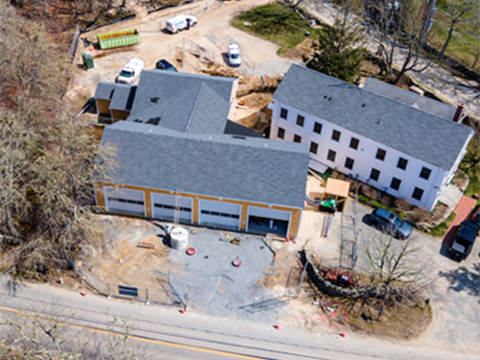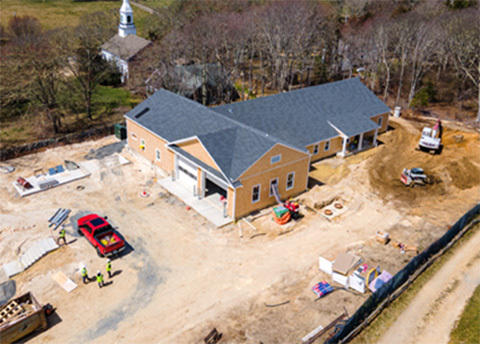Aquinnah and Chilmark Work With Lawrence Berkeley National Laboratory Toward Resilient Energy Systems on Martha’s Vineyard
March 5, 2024 by Brooke Van Zandt
This blog post is part of NREL’s series of community spotlights for the Energy Transitions Initiative Partnership Project (ETIPP).
ETIPP is managed by NREL and draws on a network of national laboratories and regional partners organizations to provide technical assistance to island and remote communities to help improve their energy resilience.

Aquinnah and Chilmark are two towns on the island of Martha’s Vineyard off the coast of Massachusetts. As a popular seasonal destination, the island has a wintertime population of 20,000 that increases significantly to 120,000 in the summer, straining its capacity to fulfill energy demands.
With only one point of power interconnection to the mainland, the island’s vulnerability to power outages is exacerbated by storms that are becoming increasingly intense and frequent due to climate change, which threatens the island’s resiliency, said Luke Lefeber, a member of Aquinnah’s energy committee who also serves as controller and renewable development manager for the local nonprofit Vineyard Power.
“It’s really important to have resilience in the face of increased storms, especially in Chilmark and Aquinnah, which are the more remote parts of the island,” he said.
Aquinnah and Chilmark are prioritizing energy resiliency for their critical facilities, such as town halls, fire stations, a police station, and electric vehicle charging stations. In support of the towns’ energy goals, ETIPP researchers at the Lawrence Berkeley National Laboratory (LBNL) are helping them assess whether it’s feasible to use distributed energy resources and battery storage to power those facilities.
One challenge LBNL researchers have faced since the community joined ETIPP in 2022 is a lack of historical data to feed their energy models since many of the buildings are newly constructed.
"We were thankfully able to overcome this challenge due to strong engagement and support from our community contacts, who provided architectural drawings and a number of other data sets that allowed us to produce detailed representation of those buildings and simulate their energy behavior,” said LBNL researcher Nicholas DeForest.
LBNL’s models have helped characterize electricity demand and quantify the portfolio of distributed energy resources needed to provide resilience during outage events.
“We explored a number of metrics to help the community understand potential trade-offs between resilience, capital costs, operational savings, et cetera,” said LBNL researcher Miguel Heleno.
Understanding these trade-offs will help the community make decisions down the road.
“Being a small community, capital financing is always something that we're looking at,” said Lefeber. “So, for me, I see the ETIPP process as not just a technical and feasibility study, but also a foundation through which to build community support and go out and procure the necessary funds to make these projects happen.”

Looking forward, the researchers will next conduct detailed modeling of potential microgrid systems in outage-recovery conditions. They are also exploring alternative approaches to exporting photovoltaic energy and other operational questions that may affect the economic performance of the community microgrids.
Beyond the island’s immediate goals related to critical services, resilience is an overarching goal of achieving “a 100% renewable energy future that encompasses the entirety of the economy and doesn't leave anybody behind,” said Lefeber. That includes environmental justice communities, individuals that are disproportionately impacted by climate change, low-income residents, and isolated communities.
“These types of energy transition projects are clearly complex and can be intimidating to initiate in some cases,” said DeForest. “Our hope is that the technical assistance modeling—along with the engagement with community throughout the project—has helped further their understanding of the critical questions and conditions that drive a successful energy transition project. Furthermore, we hope that this new understanding will allow each community to move forward with confidence into the next stages of project deployment and operation.”
For more community spotlights and achievements, see ETIPP’s 2023 Annual Report.
Share
